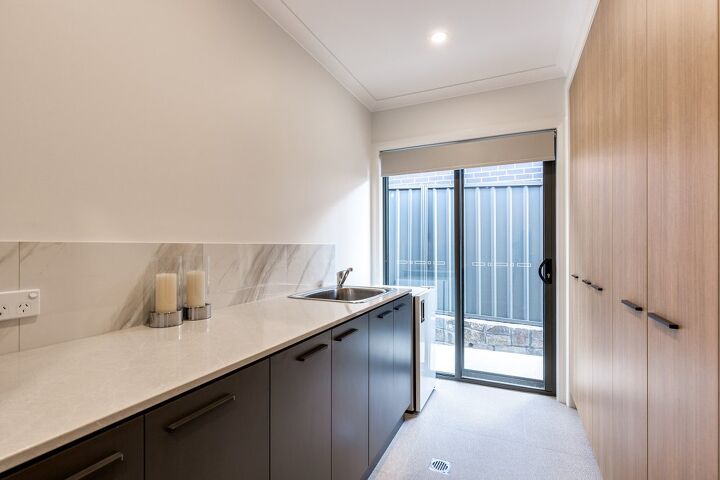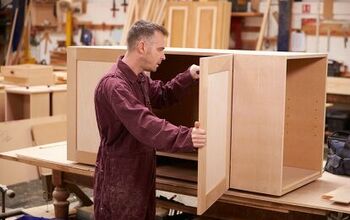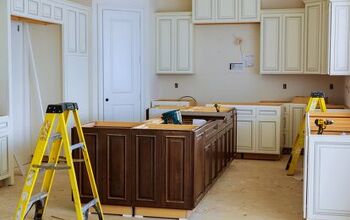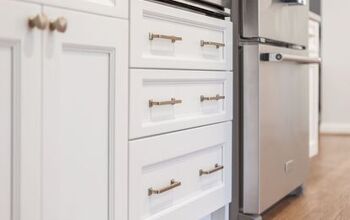Inset Vs. Frameless Cabinets: What Are The Major Differences?

Inset cabinetry and frameless cabinetry are enjoying a revival in home design. Both types of cabinets boast a sleek European look and increase the sense of luxury style in the kitchen. However, the ambiance invoked by these two styles can be very different.
Inset cabinets are inspired by Victorian artisans. Cabinet doors are mounted flush with the frame. This creates a sleek old-world European look. Doors bind in high humidity. Frameless cabinet doors are mounted on the outside of the cabinet faces with minimal gapping. This is an ultra-modern, sleek European look. Faces often bind on the frame, nearby cabinets, and walls.
Both styles of cabinetry will give a chic, modern vibe to the kitchen. The difference is what particular style is desired for the home. Both styles of cabinets must be mounted precisely and maintained carefully because they are prone to binding when doors become misaligned.
Do You Need to Hire Cabinet Installers?
Get free, zero-commitment quotes from pro contractors near you.

The Pros of Inset Cabinets
Inset cabinets are the most timeless style of cabinet. This style was pioneered by Georgian and Victorian artisans. They developed new styles of hidden hinges that could swing the door outward and leave enough room for it to not bind on the frame.
- This style of cabinet is the perfect bridge between American traditional framed cabinets and more modern frameless cabinets. It brings a significant update to the room without going ultra-modern.
- Inset cabinets are less likely to get scratched and chipped on the outer edges of the doors because they are flush with the cabinet.
- Inset cabinets are perfect for use with very stylish pulls and knobs. The cabinets are less showy than framed cabinets, making hardware stand out.
- Inset cabinets show off the complete face frame with minimal gapping between cabinet units. There is also minimal gapping between the door and the inside of the frame.
- Inset cabinets are ideal for creating lazy-susan corner cabinets because the entire cabinet frame can rotate inward along with the shelving.
- Cabinets are anchored together through the thicker frame, allowing for fewer anchor points and more sturdy installation.
Inset cabinets are the most popular modern style for new classically designed homes.
The Cons of Inset Cabinets
The pros of inset cabinets far outweigh the cons, but these are things to keep in mind when choosing to install or remodel with this style of cabinetry.
- The doors and drawer faces are likely to bind with high humidity. This will cause drawers and doors to develop rubbing marks with use.
- When the rubbing is persistent, the cabinets will wear faster than traditional framed cabinets which do not rub on the cabinet frame.
- This style of cabinets will not function if the doors become misaligned. Where framed cabinet doors will function well with a significant amount of misalignment, these will become jammed close or be stuck open, hitting the frame instead of closing.
- The hinges that allow the doors to recess into the frames must be maintained and replaced when they show wear to keep the cabinets functional. These hinges are more expensive to replace than framed door hinges.
- Inset cabinet frame design does not allow full access to the cabinet boxes and drawer boxes. This creates a lot of wasted space inside the cabinets and drawers.
- If pull-out shelves are designed for inset cabinets, they will have several inches of wasted space on both sides so that they can be pulled out.
Due to the high levels of unused space inside of inset cabinets, they are recommended for large kitchens, but less desirable for small kitchens where storage space is vital.
The Pros of Frameless Cabinets
Frameless cabinets are the sleekest and most ultra-modern of all the cabinet styles. This type of cabinet does not have a frame face like all other cabinet styles. Instead, the cabinet abruptly ends at the front, and the entire cabinet is covered by doors.
- The doors are wide and tall enough to cover the entire cabinet without the need for face-framing.
- The doors are installed with just enough of a gap to allow smooth opening and closing of doors and drawers.
- This style gives a very sleek and uniform look to the room.
- It is a great style to show off sleek, minimalistic pulls and knobs.
- This style is perfect for installing touch-sensitive opening controls. These can be as simple as a push-to-open latch, or as futuristic as touch-sensitive servo controls.
- Frameless cabinets give complete access to the entire cabinet box. There is no wasted drawer or cabinet space on frameless designs.
Frameless cabinets are enjoying vast popularity in space-saving kitchens because they allow full access to the cabinet box. There is not a square inch of wasted space with this style of cabinet, making it perfect for smaller kitchens.
The Cons of Frameless Cabinets
Frameless cabinets also have a few cons, which usually do not outweigh the pros of this super-efficient design.
- This style is most likely to pinch fingers. The low gap will catch the fingers of the unwary on both doors and drawers. This is why touch-sensitive servos are very popular for these cabinets. They eliminate the need to manually close doors and drawers.
- There is almost no space between doors. Almost imperceptible alignment issues will cause doors to bind on each other.
- Opposite-facing doors will slam against each other if they are opened at the same time. The hinges and minimal clearance do not allow for multiple cabinets to be open nearby without causing damage.
- Even low-profile pulls and knobs will hit neighboring cabinets if they are opened simultaneously, causing dents and scratches.
- They are anchored together with shorter screws in more places because of the lack of face-framing. This makes them less sturdy.
Most of the time frameless cabinets are installed in smaller kitchens where space is at a premium. This style of cabinetry does have problems to be aware of, but they can be easily solved by taking preventative measures and having them professionally installed.
Inset Cabinets vs. Frameless Cabinets
We will put all of the pros and cons together here so that you can see them at a glance. This will help you to make the right decision on which to choose for your home.
| Inset Cabinet Pros | Frameless Cabinet Pros | Inset Cabinet Cons | Frameless Cabinet Cons |
| Door and drawer edges are protected | No need for a face frame | Drawer and cabinet faces can bind | Easily pinch fingers |
| Good for pulls and knobs | Work with touch-control servos | Will show rubbing wear and tear | Doors will bind on each other |
| More elaborate and old-world style | Minimalistic, sleek, ultra-modern style | Hinges need maintenance and are more expensive | Doors will bang on each other and walls |
| Perfect for lazy-susan corner cabinets | Maximizes interior cabinet space | Wasted interior cabinet and drawer space | Less sturdy installation |
| More sturdy installation |
The pros and cons of inset cabinets and frameless cabinets are very similar. The real difference is in the style that they evoke inside the home.
Do You Need to Hire Cabinet Installers?
Get free, zero-commitment quotes from pro contractors near you.

Related Questions
What Is The Difference Between Inset Cabinets and Overlay Cabinets?
Where inset cabinets have the drawers and doors set inside the cabinet frame, overlay cabinets have full doors mounted on the outside of the frame with minimal gapping. This is usually a decorative style of door that helps to give the illusion of an inset cabinet. The benefit is that the hinges are hidden for a sleek look, but the doors will not bind on the inside of the frame.
What Is The Difference Between Frameless Cabinets and Framed Cabinets?
Frameless cabinets have a full door that covers the interior of the cabinet. There is no face frame for attaching doors. The doors come together with almost no gap which can make them hard to use. There is no wasted space inside frameless cabinets.Framed cabinets have a face frame to finish off the cabinet box. Doors are mounted to the frame with a space between each door. This style does not bind and does not usually pinch fingers because of the increased space between doors. Framed cabinets have varying amounts of the cabinet face visible, depending on the style.

Hannah DeMoss has been a writer for nearly a decade. Her passion for writing began years ago has continued to grow. Her expertise at home involves furniture restoration and other small DIY tasks. When not writing, Hannah enjoys the outdoors with her husband and pups, as well as traveling.
More by Hannah DeMoss






















![10 Most Dangerous Neighborhoods in Baltimore [Updated]](https://cdn-fastly.upgradedhome.com/media/2023/07/31/9075655/10-most-dangerous-neighborhoods-in-baltimore-updated.jpg?size=350x220)




